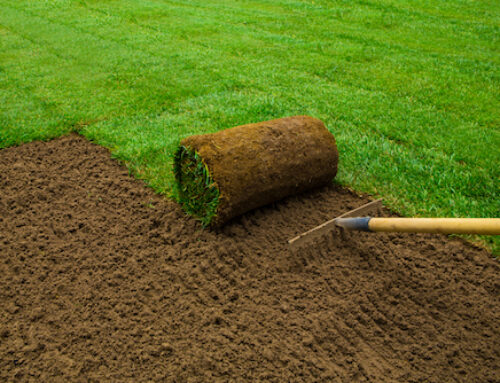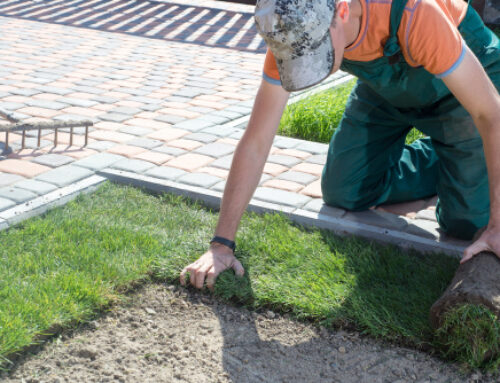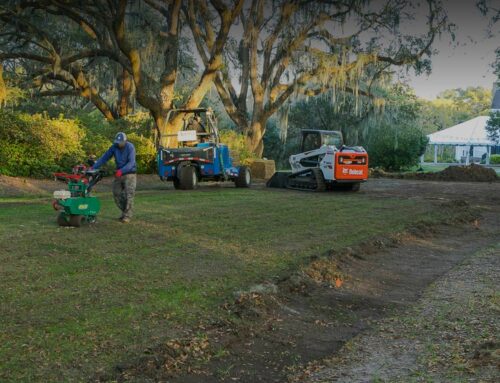Introduction to Seasonal Sod Care
A lush, green lawn symbolizes pride for homeowners and is a fundamental element of our outdoor living space. The health and vibrancy of your lawn depend significantly on how it is cared for throughout the year. Seasonal sod care is crucial because each season brings its own set of challenges and requirements. From the rejuvenating spring growth to the harsh winter dormancy, understanding and adapting to these seasonal needs is critical to maintaining an aesthetically pleasing and environmentally beneficial lawn. This article delves into the essentials of seasonal lawn care, providing a roadmap for homeowners to nurture their lawns all year round.
Winter Lawn Care
Winter lawn care is less about active maintenance and more about protection and preparation for the upcoming spring. During the cold months, your lawn goes dormant, but there are still measures you can take to ensure it emerges healthy and vibrant once warmer weather returns.
Protecting the Lawn During Cold Months
The first step in winter lawn care is to minimize foot traffic on your grass. Constant walking or playing on a dormant lawn can weaken grass blades and lead to bare spots in spring. If you have pathways or areas where traffic is unavoidable, consider laying stepping stones or temporary walkways to protect the grass underneath.
Remove any lingering debris, like fallen branches or leaves, before the first snowfall. This debris can smother the grass, create conditions for mold or disease, and invite pests. Also, ensure your lawn is adequately drained; waterlogged soil can freeze and damage the grassroots.
Managing Snow and Frost
When it comes to snow and frost, the key is to let nature take its course. Avoid walking on frosty grass, which can break the frozen blades and leave unsightly marks. When shoveling snow, distribute it evenly across the lawn to avoid large piles that take a long time to melt and can smother the grass underneath. Avoid using salt or chemical deicers near your yard, as these can damage the grass and soil.
Planning for the Upcoming Spring
Winter is an excellent time for planning your spring lawn care strategy. This can include researching and purchasing needed supplies, like fertilizers or seeds, and preparing major lawn projects. It’s also a good time to service your lawn care equipment, ensuring everything is in working order for the busy spring season.
By taking these steps during the winter, you’re protecting your lawn from the harsh elements and setting the stage for a thriving and vibrant spring. Remember, a little care in the winter can lead to big rewards once the growing season starts anew.
Spring Lawn Care
As winter recedes, your lawn emerges from dormancy, making spring a critical time for lawn care. The first step is cleaning and preparing the lawn after the long, cold months. Begin by gently raking the lawn to remove any debris, leaves, or thatch accumulated over winter. This cleans your lawn and stimulates the grass blades and soil underneath, encouraging healthy growth.
Mowing strategies in spring are pivotal in setting the tone for your lawn’s health throughout the year. Start the season with a mower blade set to a higher setting, as cutting the grass too short can stress it and make it more susceptible to diseases and weeds. The ideal height for spring mowing is about 2-3 inches. This height helps develop a deeper root system, essential for the grass to withstand the upcoming summer heat.
Fertilization is another crucial aspect of spring lawn care. Apply a balanced fertilizer that promotes leaf and root growth. The key is to wait until your lawn starts actively growing. Additionally, spring is the perfect time to apply pre-emergent weed control. This will help prevent weeds from taking hold in your lawn, saving you from more extensive weed issues later in the season. Remember, a healthy, well-fed lawn is your best defense against weeds and pests.
Summer Lawn Maintenance
Summer brings a unique set of challenges for lawn care, primarily due to higher temperatures and potential pest invasions. Proper watering techniques are paramount during this season. Watering your lawn deeply but infrequently is essential to encourage profound root growth, which helps the grass withstand the heat and dry conditions. The best time to water is early morning, which reduces evaporation and helps prevent fungal diseases. Aim for about an inch of weekly water from rainfall or irrigation to keep your lawn hydrated.
Heat stress can make your lawn more susceptible to damage and pests. To manage heat stress, avoid mowing during the hottest parts of the day or when the grass is stressed from drought. Raise the mower blade in summer to allow grass to grow taller; taller blades shade the soil, which reduces water evaporation and keeps roots cooler.
Pests like grubs and chinchbugs can be more active in summer. Regularly inspect your lawn for signs of pest activity and treat it with eco-friendly options.
Summer fertilization should be approached with caution. If your lawn is a cool-season grass type, it’s often best to skip fertilizing in the summer as it can lead to excessive growth and additional stress. For warm-season grasses, a light fertilizer application can support growth during their peak growing season. Always follow the manufacturer’s instructions and avoid over-fertilizing, which can harm your lawn and the environment.
Fall Lawn Preparation
Fall is a crucial time for lawn care, as your actions during this season can significantly influence your lawn’s health in the following year. One of the critical tasks is aeration, which involves perforating the soil with small holes to allow air, water, and nutrients to penetrate the grassroots. This helps alleviate soil compaction, promotes root growth, and improves the overall health of the lawn. Aeration is best done in early fall when the yard grows actively.
Overseeding is another important fall activity, especially for lawns that have become thin or have bare spots. By spreading new grass seed over the existing lawn, you can fill in these areas and improve the density and color of your lawn. Choose a seed mix that matches your current lawn type and the specific conditions of your yard.
Adjusting your watering and mowing practices is also essential in fall. As temperatures drop, lawns require less water. Reduce the watering frequency but ensure the lawn receives enough moisture to stay healthy. Similarly, adjust your mowing height. Raise the blade slightly in the fall to leave the grass a bit longer, which helps it withstand the winter cold.
Finally, preparing your lawn for winter involves removing leaves and debris, which can smother the grass and foster disease. A final application of fertilizer formulated for fall use can help strengthen the roots and prepare the grass for the cold months ahead. By taking these steps, you ensure that your lawn enters winter in the best possible condition, ready for a strong resurgence in spring.
Eco-Friendly Lawn Care Practices
Adopting eco-friendly lawn care practices is not only beneficial for the environment but can also lead to a healthier and more sustainable lawn. One of this approach’s key components is using organic fertilization options. Organic fertilizers are derived from natural sources such as compost, manure, or bone meal, and they release nutrients slowly, providing a steady, natural growth pattern for your lawn. These fertilizers improve soil structure and increase its ability to hold water and nutrients, reducing the need for chemical treatments.
Sustainable watering practices are another crucial aspect of eco-friendly lawn care. Instead of frequent, shallow watering, opt for deep, infrequent watering early in the morning or late in the evening to minimize evaporation. This method encourages more profound root growth, making your lawn drought-resistant and healthy. Collecting rainwater in barrels for irrigation is another excellent way to conserve water and reduce utility bills.
Regarding mowing, eco-friendly practices include using a manual push mower or an electric mower, which are less polluting than gas-powered alternatives. Keeping your mower blades sharp ensures clean cuts and healthier grass. Also, consider leaving grass clippings on the lawn as a natural mulch, which decomposes and returns valuable nutrients to the soil.
By implementing these organic and sustainable practices, you contribute to a healthier environment and cultivate a naturally beautiful and resilient lawn.
Professional Lawn Care Services
There comes a time in every homeowner’s life when hiring a professional lawn care service becomes a practical necessity. This decision is often driven by a lack of time, the complexity of lawn care, or the desire for a more professionally manicured lawn. Find yourself overwhelmed by the intricacies of lawn maintenance, unable to keep up with the regular care needed, or want to enhance the health and appearance of your lawn. It might be time to consider professional services.
Lawn care professionals offer a wide range of services beyond basic mowing. They are equipped to provide comprehensive lawn analysis, identifying issues such as soil imbalances, pest infestations, or diseases that might not be apparent to the untrained eye. Based on this analysis, they can tailor a specific treatment plan that includes fertilization, weed control, pest management, aeration, and overseeding. These services are often bundled into seasonal care packages, ensuring your lawn receives the proper care at the right time.
Additionally, many lawn care companies offer specialized services such as landscaping, tree and shrub care, and irrigation system maintenance. The advantage of hiring professionals lies in their expertise, access to high-quality products and equipment, and the consistency of care they provide. By entrusting your lawn to experts, you ensure it remains healthy, vibrant, and aesthetically pleasing throughout the year while freeing up your time to enjoy your outdoor space.





